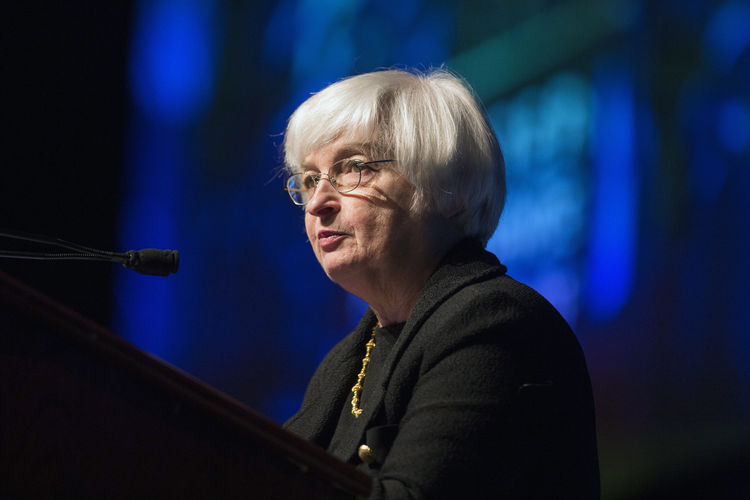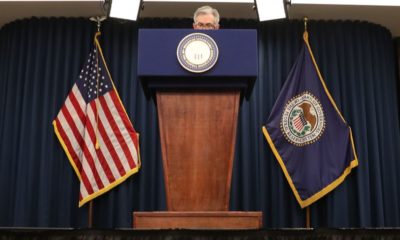- Fed Says Balance-Sheet Unwind to Start ‘Relatively Soon’
Federal Reserve officials said they would begin running off their $4.5 trillion balance sheet “relatively soon” and left their benchmark policy rate unchanged as they assess progress toward their inflation goal.
The start of balance-sheet normalization — possibly as soon as September — is another policy milestone in an economic recovery now in its ninth year. The Fed bought trillions of dollars of securities to lower long-term borrowing costs after cutting the main interest rate to zero in December 2008.
“Near-term risks to the economic outlook appear roughly balanced,” the Federal Open Market Committee said in a statement Wednesday following a two-day meeting in Washington. “Household spending and business fixed investment have continued to expand.”
Fed watchers had anticipated that the inclusion of the term “relatively soon” would signal the central bank could announce the timing of the balance-sheet reduction program at its next meeting, scheduled for Sept. 19-20. U.S. stocks rose slightly and 10-year Treasury yields fell following the Fed’s statement.
“I expect an announcement of the onset of the balance-sheet reduction at the conclusion of the September meeting, effective on the first of October,” Carl Tannenbaum, chief economist at Northern Trust Corp. in Chicago, said after Wednesday’s statement.
Another Increase
U.S. central bankers have raised the benchmark policy rate four times since they began removing emergency policy in December 2015, and project another increase before the end of this year.
In June, the FOMC outlined gradually rising runoff caps for maturing Treasuries and mortgage-related securities, and said the program would start “this year.”
Fed Chair Janet Yellen has allowed the labor market to strengthen while inflation has remained lower than the 2 percent goal of officials, with price pressures declining in recent months. The target range for the benchmark federal funds rate was held at 1 percent to 1.25 percent.
The FOMC said it’s “monitoring inflation developments closely.”
Wednesday’s statement highlighted that a period of weak inflation continues. “On a 12-month basis, overall inflation and the measure excluding food and energy prices have declined and are running below 2 percent,” the statement said.
U.S. unemployment was 4.4 percent in June, below the Fed’s 4.6 percent estimate of full employment. Inflation has missed the central bank’s target for most of the past five years. The central bank’s preferred price measure rose 1.4 percent for the 12-month period ending May.
The FOMC retained language that it expects to keep raising interest rates at a “gradual” pace if economic data play out in line with forecasts.
“The committee will carefully monitor actual and expected inflation developments relative to its symmetric inflation goal,” the statement said.
The vote on Wednesday’s decision was unanimous.
Easing financial conditions, despite Fed rate hikes, have helped support overall growth. U.S. stocks extended all-time highs ahead of Wednesday’s statement amid corporate earnings and gains in commodities.
The U.S. Commerce Department will release second-quarter growth data on Friday. Analysts surveyed by Bloomberg expect the economy to have rebounded to a 2.5 percent annualized growth pace, from 1.4 percent in the first quarter.


 Naira4 weeks ago
Naira4 weeks ago


 News3 weeks ago
News3 weeks ago
 Education4 weeks ago
Education4 weeks ago


 Social Media4 weeks ago
Social Media4 weeks ago
 Economy4 weeks ago
Economy4 weeks ago
 Investment4 weeks ago
Investment4 weeks ago


 Dividends4 weeks ago
Dividends4 weeks ago


 Business3 weeks ago
Business3 weeks ago



















